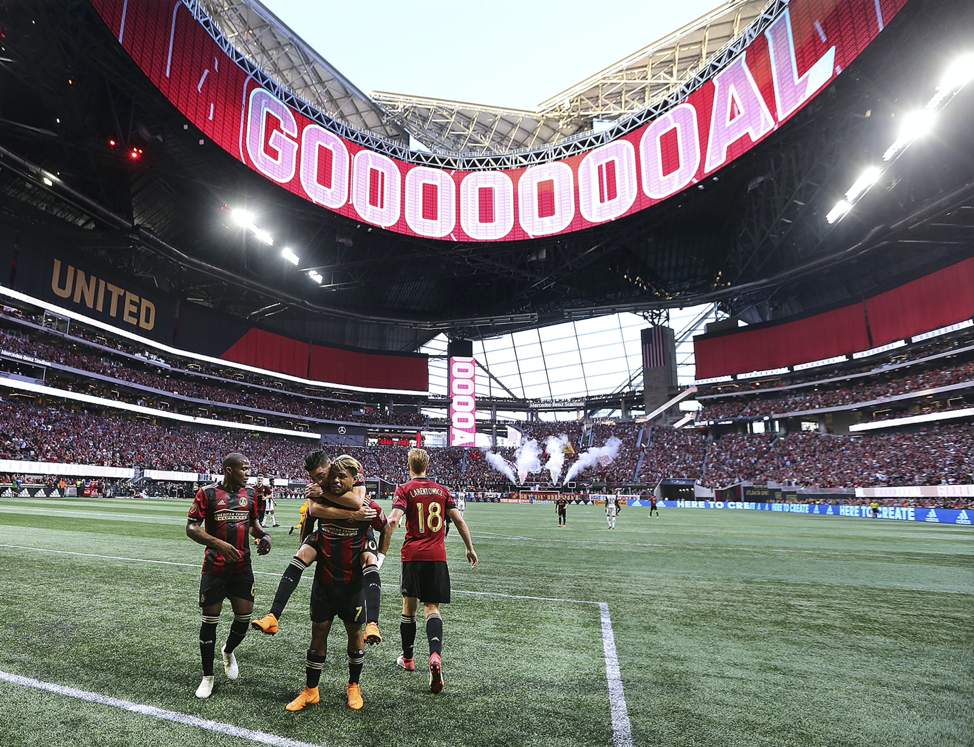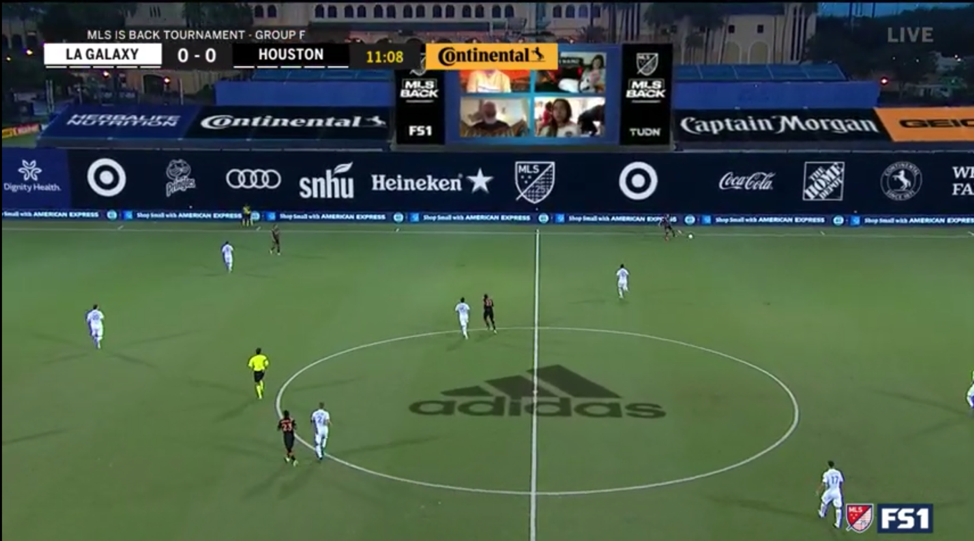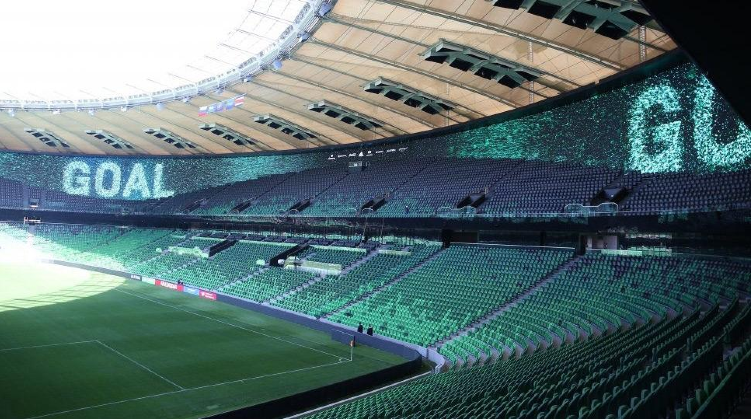These are unusual times for our industry. Soccer without fans is not something anyone has ever really contemplated.
COVID-19 has forced properties, brands, and broadcasters to scramble like never before to find a new playbook. It’s a topic many industry observers have written about and will continue to opine over for many months to come.
Rather than dwell on the same, I thought I’d take a moment to think about the industry post-COVID-19. What are the aspects of the COVID-19 playbook that will have a lasting impact and ultimately help shape the future of soccer marketing and sponsorship?
Here’s a hat trick of thoughts.
There’s a whole lot more innovation to be had with in-stadium digital signage
In-stadium digital video boards have evolved tremendously over recent years. Look no further than Atlanta United for a best-in-class execution. But as great as Atlanta is, watching the MLS is Back Tournament has got me thinking a little differently about this asset.


Heading into the bubble environment of a Disney tournament, MLS was forced to essentially build a “broadcast stadium” from scratch. The asset of field signage, something that really had one job to do – provide exposure to advertisers – now needed to address a number of challenges:
- Provide exposure (and a lot of it) to national partners
- Satisfy the local sponsor needs of the two participating teams
- Bring displaced fans into / closer to the action
- Provide a broadcast-friendly backdrop that enhanced the viewing experience
With the use of a bold blue screen infrastructure MLS was able to create a digital canvas that accomplished all four of these objectives. Add in a few additional camera angles, some alternate audio approaches, and MLS able to deliver a match presentation that felt just right given all the challenges at hand.
While contemplating these aspects I found myself thinking about FC Krasnodar – a Russian Premier League club with (in my opinion) the most amazing in stadium video wall. What I love about their execution is how it was architecturally woven seamlessly into the stands and the crowd.
https://www.youtube.com/watch?v=z9td7KRwlfY
I came to the realization there is still so much more opportunity for innovation and executional creativity to be had. The technology exists, and with an even greater emphasis on creativity of execution and closer working rapport between architects and marketers, I believe there is a blueprint to reimagine the soccer stadium experience.
The opportunity exists to create something a whole lot more immersive and valuable for all parties. An experience that fully embraces both fans in the stands and viewers around the world. An experience that caters to the needs of local, national, and global brand partners. An experience that provides an incredible showcase environment for the game.
Sponsorship value is relative and properties will need to adjust
“Make-good” is assuredly the sports marketing term of 2020. The suspension of sports and then its reemergence as a fan-less experience has created all kinds of problems for properties and brands.
The spotlight has fallen brightly on sponsorship value. Where exactly is the value coming from? What is the value? How can this value be replaced / restored when specific assets are compromised? Even though the “science” of sponsorship metrics and evaluation exists these remain challenging questions to answer.
As I watched the MLS Tournament, I found myself asking:
Does Heineken really need more signage exposure?
Why does AT&T have so many TV spots? (Sorry AT&T, but there’s only so much of Lily and her googly eyes a person can take)
Does that sleeve logo really replace the missed opportunities of experiential marketing with fans at a stadium?
What’s the diminishing value discount applied to the adidas logo in the center of the field? It is on-camera an awful lot for a brand that must enjoy near universal awareness. Wouldn’t it be even more valuable to a lesser known brand?
Properties have limited make-good options at their disposal and therefore so do brands. But are these trade-off scenarios really valuable? The answer is – it depends. It depends on the brand status in question, the marketing objectives of that brand, and alternative opportunities available to the brand, and a number of other factors. In some situations it might make sense – but not in all.
The notion that value (to a brand) is relative is not new – but perhaps the appreciation of the real-world implications has now shifted. When the entire sports industry is forced to engage in make-good discussions all at the same time the construct of property-brand partnership in the future will surely be different.
We will get beyond the logos
Please read this headline closely because it’s important. I’ve chosen to take an enlightened (if indeed that is the right word) stance on the topic of logo integration. Look, I get it. Brand awareness and logo integration on uniforms, signage, or within broadcast is the easiest and most tangible way to provide make-good value to brands in the current climate. It’s a pragmatic solution to the very real challenge.
But as a marketer I also know there is so much more fertile marketing terrain to be had beyond simply more logo exposure. So, I’m choosing to believe that the current logo orgy is simply a reaction to the times and soccer marketing of the future will be much more unique, diversified, creative, and focused on consumer engagement.
There’s a couple of positive developments during COVID-19 that I feel will help influence this new reality.
First, we have been reminded about just how important shared experiences are to human beings. With real world gatherings on hold, online engagement has taken center stage. This necessity has created a much broader perspective for how a brand can facilitate a shared experience. So, while I fully believe that live experiential marketing will return in force (maybe in the summer of 2021), I also expect to see brands continuing to develop new and intriguing ways to bring people together via digital means.
Second, the COVID-19 marketing playbook has challenged brands to think holistically about every dimension of their brand messaging. Even after COVID-19 passes I expect brands to think harder about their soccer marketing activities and what they are truly doing to affect not only immediate business goals, but also longer-term brand status, fans and the community, and the sport in general.
Shout out to our client at Volkswagen, who have heralded (well before the pandemic) the importance of integrating a higher purpose filter across all activation efforts with soccer. VW’s Drive Bigger initiative is perfectly illustrated by the support afforded to local community programs as selected by the Team VW athletes.
Conclusion
It’s hard during the current climate to think long-term. The challenges of today are very real for everyone. But when I’ve taken the chance to step back a bit and think about the future of our industry, it’s not difficult to find a number of new ideas, inspirations, and reasons for encouragement.
The best days for the soccer marketing industry in the U.S most definitely lie ahead.
Categories: Soccer Marketing, Sponsorship, Thought Leadership
